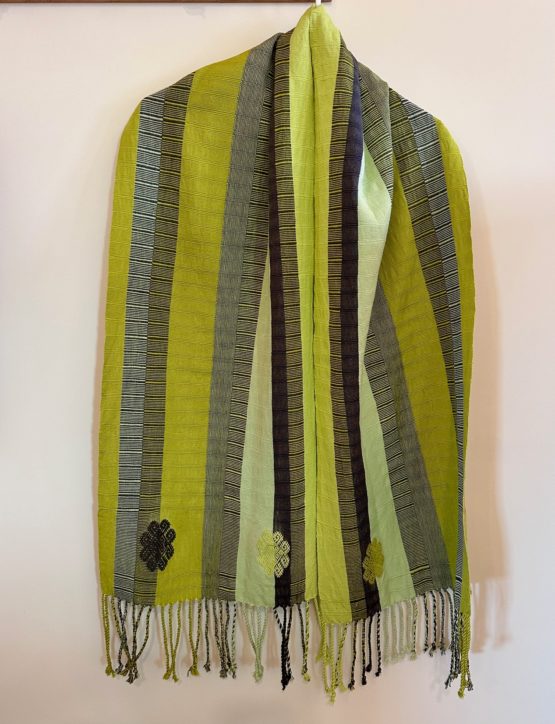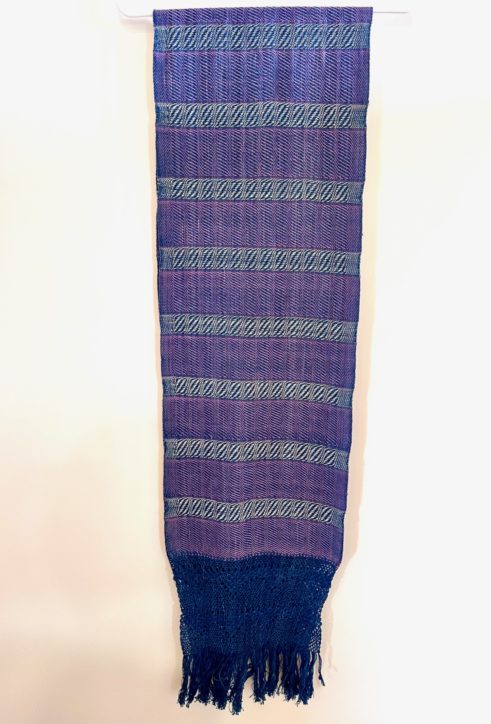In their own words, Innovando la Tradicion is a creative platform where artisans, designers and artists share skills, knowledge and stories to rethink and honor the ceramic traditions of Oaxaca. The group helps potters and pottery communities in Oaxaca with support to develop their trade.

Francisca finishing the clay comal (griddle)
Before the new year, my sister and I joined a one-day excursion to Santa Maria Atzompa sponsored by Innovando la Tradicion and hosted by Gregorio Desgarennes Garzón who everyone calls Goyo. The idea was to spend time with a local family, part of the Innovando la Tradicion collective, and learn how they work with clay to make functional and decorative pieces.


This was not a shopping trip. It was a meaningful educational and cultural experience to go deeper into Oaxaca’s indigenous traditions. In Atzompa, craftsmen have worked in clay for centuries. They shaped religious articles, storage and cooking vessels for the Monte Alban ruling class, long before the Spanish conquest.



These same traditions continue today with some modification of the ancient technologies. In addition to firing the wood kiln, there is also a modern propane oven for cooking clay at higher temperatures. Traditional shapes take form alongside innovative contemporary sculpture.


Our multi-national group spent the day with Francisca, her husband Guillermo and their three daughters Karina, Vianney and Maité. Clay has always been in my family, say the couple. We added our impressions: It is the material of possibility, the smell of the earth, it evokes chocolate, bread, eating, family and nature.


Guillermo took us into the yard first to demonstrate how the large clay chunks are broken up with a mallet made from a hardwood tree limb. He digs the clay himself from a pit not far from the village center. Some of us volunteered to give it a try and didn’t last too long.


After the clay is pulverized to a fine powder and put through a sieve, it is mixed with black clay that comes from the bottom of a nearby lake. This gives it strength and elasticity. It is Guillermo who does all the heavy prep work.
How do you know when it’s ready? someone in the group asks. We can tell by touching it, was the answer. There is no written recipe.

My sister and I loved watching all this because our dad was a potter in Los Angeles and the entire process reminded us of our growing up years, watching dad knead the clay, then work it on the wheel into functional and whimsical objects of beauty.


Just as we did, the children here play with clay when they are young, forming simple shapes made with the coil or pinch pot method.
Each day, Guillermo prepares a batch of clay that Francisca will make into comals for sale to clients or at the local market. They make only enough for that day. Francisca is known for her fine clay comals. Her mold is a 12-year old comal that is the correct diameter and thickness. She will make about eight comals in a day. Each one, used for making tortillas or their variation, may last for about two months.


Her tools are trees and gourds. She uses her fingers to feel the thickness of the clay, testing it, determining if she needs to add more to the center for strength.
Her children know how to do this, too, now. But she dreams that her children will go to university and have a profession. Yet, she also wants them to make ceramics.

As Francisca pulls and shapes the clay, we watch mesmerized as she forms a beautifully round, perfect comal with lip that is desired by all who work with corn, another artisan craft.
The comals will sell for 55 to 70 pesos each. It takes about an hour to make a large one. In the currency exchange rate of pesos to dollars, that’s about $3 to $4.50 each. At the rate of eight per day, the gross is $24 to $36 USD per day including labor and materials.


When the comal is finished, Guillermo carries it to the sun to dry. Francisca and Guillermo can fit about 36 comales into the adobe kiln, stacked vertically. The kiln is covered and fueled with wood. After about two hours the temperature reaches a low-fire 900 degrees Fahrenheit. The fire burns out and the clay contents cool, then are removed and prepared to transport to market.

After the demonstration, we took a lump of clay and began to form our own pieces. Some of us used a small wheel the size of a plate, balanced on a rock, to turn our work. Others shaped the clay using forefinger and thumb or rolling coils and stacking them. The pieces were primitive and imaginative. It was like being a child again! Totally freeform.
Then, the tables were made ready and Francisca served us a wonderful lunch of sopa de guias, tlayudas and horchata water that she prepared. The family joined us in celebrating the end of a very satisfying day.

A special thanks to Goyo for translating everything from Spanish to English and giving us great insights into the clay making process.

Contact Innovando la Tradicion at the little clay shop 1050 Grados, Rufino Tamayo 800, Oaxaca Centro, phone 951-132-6158 to find out when their next clay tour is scheduled. It’s a wonderful experience. Don’t miss it.
Like this:
Like Loading...



























































Oaxaca-Santa Fe Connection and the International Folk Art Market
The 2016 Santa Fe International Folk Art Market is over. Hard to believe it’s been ten days since I last wrote a blog post.
Moises Martinez Velasco (left) and Arturo Hernandez Quiero (right), Oaxaca weavers
This is the second year I’ve come to Santa Fe, New Mexico, to volunteer for this amazing, often overwhelming experience of meeting hundreds of artisans from around the world. They come from as far as Uzbekistan and Kazakhstan, remote regions of the Himalayas, Thailand and Africa, Algeria, South America, and more. There is hand-woven silk, cotton, wool and plant fiber dyed with indigo, cochineal and persimmon. They fashion silver and gold jewelry, dresses, bed coverings, hats and shawls.
Modeling a natural wool shawl woven by Arturo
Mexico is one of the most represented countries, and Oaxaca artisans are well-represented:
Moises demonstrates silk spinning with drop spindle
Arturo demonstrates back-strap loom weaving at Malouf’s on the Plaza
Don Jose Garcia and wife Reyna at Mexico City airport
Alejandrina Rios and Tito Mendoza, Teotitlan del Valle weavers
It was an intense three-days of volunteering with Arturo Hernandez and Moises Martinez. Being a volunteer assistant is more than writing up sales receipts.
Life-size sculpture by Don Jose Garcia Antonio
It means helping non-English speaking Oaxaca weaving friends show and sell their amazing textiles. I opened indigo, cochineal and marigold dyed silk and wool shawls to help people see the full beauty of the textiles. On Sunday, I worked from 8:30 a.m. to 6:30 p.m. and helped them pack up what was left.
Women from Flor de Xochistlahuaca Amuzgo weaving cooperative
Santa Fe is also a place of reunion for me. Many friends who I’ve met in Oaxaca converge on Santa Fe for this market, and it’s a chance to catch up, have a meal or a glass of wine, and share stories.
Friends Leslie (Denver) and Kaola (Chapel Hill) wear Amalia Gue huipiles, Guatemala
Special saludos to Ellen Benson, Ruth Greenberger, Sheri Brautigam, Norma Cross, Sara Garmon, Barbara Garcia, Susie Robison, Leslie Roth, Kaola Phoenix, Winn Kalmon and Dori Vinella. We converged from Philadelphia, Chapel Hill, Denver, Taos and San Diego to help sustain this tradition and see each other.
Gasali Adeyemo, Yoruba, Nigeria, teaches indigo batik at Museo Textil de Oaxaca
I’ll be here until Friday, when I go to Los Angeles and then San Francisco to see my family. I’m certain there will be more synergies with Oaxaca as my travels unfold.
Jewelry from the Belber Jimenez Museum, Oaxaca
P.S. The International Folk Art Market needs more volunteers! Considering putting this in your travel plans for 2017.
The weekend started with a Chatina, Oaxaca trunk show at La Boheme, Canyon Rd. thanks to Barbara Cleaver
On-going: Oaxaca One-Day Natural Dye Textile Study Tour
February 2017: Tenancingo Ikat Rebozo Study Tour
Like this:
16 Comments
Posted in Clothing Design, Cultural Commentary, Oaxaca Mexico art and culture, Teotitlan del Valle, Textiles, Tapestries & Weaving, Travel & Tourism
Tagged ceramics, clothing, design, International Folk Art Market, Mexico, natural dyes, New Mexico, Oaxaca, Santa Fe, textiles, weaving